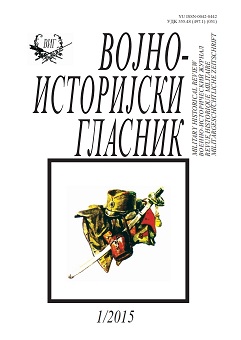Антимасонска изложба у Београду 1941. у контексту нацистичке антимасонске активности у окупираној Европи 1939–1945.
The 1941 Anti-Masonic Exhibition in Belgrade in the Context of Nazi Anti-Masonic Activities in Occupied Europe, 1939–1945
Author(s): Aleksandar StojanovićSubject(s): Visual Arts, Political history, Interwar Period (1920 - 1939), WW II and following years (1940 - 1949), Fascism, Nazism and WW II, History of Antisemitism, Sociology of Politics
Published by: Institut za strategijska istraživanja
Keywords: Anti-masons exhibition; anti-Semitism; anti-communism; propaganda; Second World War; Europe; Serbia; occupation; collaboration;
Summary/Abstract: Based on unpublished archival records, interwar and collaborationists’ press, and historical articles of Serbian and European origin, this article represents an analysis of the Anti-Masonic exhibition in occupied Belgrade, with a special focus on its origin and organization. This article also places the Belgrade exhibition in its historical context by comparing it with anti-Masonic propaganda in Vichy France and occupied Belgium. Since they came to power in Germany, the Nazis conducted a cruel and aggressive campaign against elements of internationalism: Jews, Free Masons, and Communists. Nazi policies were, by the end of 1930s and in the second half of 1940, exported to occupied countries, allies of the Axis, as well as to to weak, neutral countries of southeast Europe. A great public Anti-Masonic propaganda wave in the Kingdom of Yugoslavia started in July 1940, under the political influence of Nazi Germany, which pressured Yugoslavia to join the Axis. Several leading protagonists of that campaign, including Dr. Lazar Prokić and Stevan Kluić, were involved in organizing an Anti-Masonic exhibition in Belgrade during the World War II occupation. The exhibition was held in the former great lodge “Yugoslavia” building and it was one of the greatest achievements of collaborationists’ propaganda. Some 80,000 people visited the exhibition that was officially opened from 22 October 1941 until 19 January 1942. The concept of the Belgrade exhibition was similar to those Anti-Masonic exhibitions held in occupied Paris and Brussels, simultaneously targeting Free Masons, Jews, and Communists. The intense struggle of collaborationists’ forces with the insurgents in Serbia during the autumn and winter of 1941 reinforced the propaganda role of the Anti-Masonic exhibition. The exhibition inspired hundreds of vehement anti-Semitic and anti-Communist articles published in the collaborationists’ press. Historical sources and comparative analysis have shown that the main initiators and benefactors of the Belgrade Anti-Masonic exhibition were the Germans, while the organization and propaganda work were left to the radical collaborationists, such as Prokić, who had been supporters of Nazism long before the war and had cooperated with the German secret services.
Journal: Vojnoistorijski glasnik
- Issue Year: 2015
- Issue No: 1
- Page Range: 93-122
- Page Count: 30
- Language: Serbian

